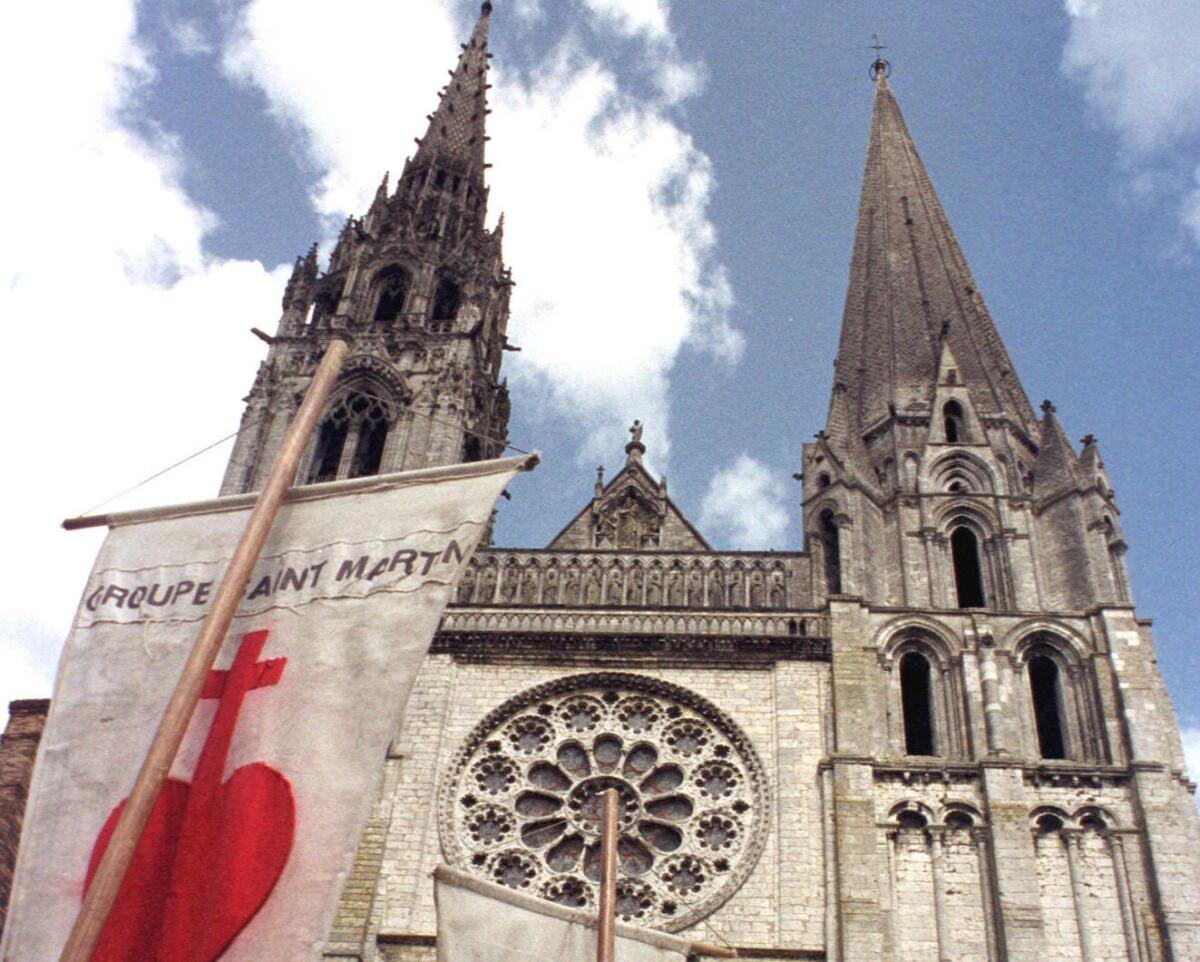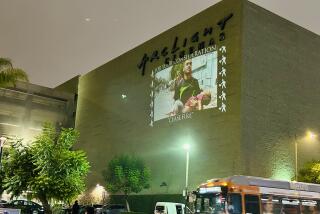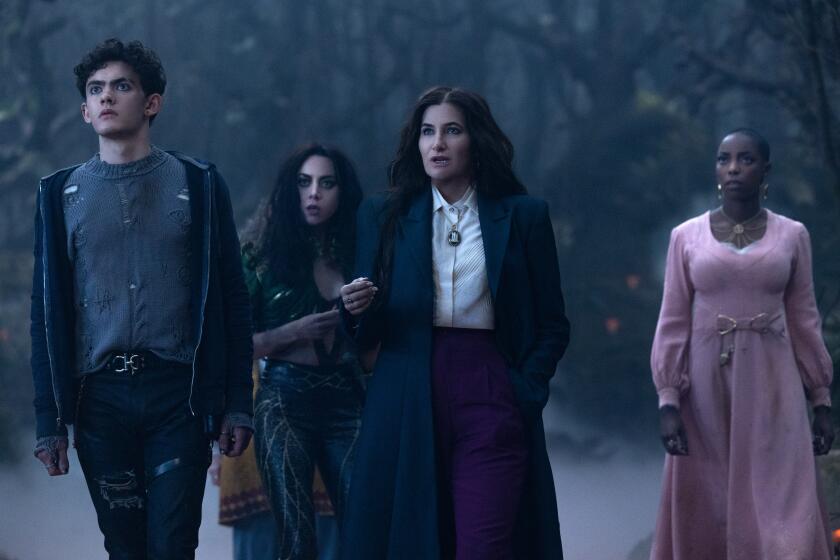Roundup: A Gothic cathedral, the Hollywood sign, ‘Serial’s’ end

A Gothic Cathedral in France is at the heart of a squabble about appropriate conservation techniques, the Hollywood sign is at the heart of a battle about public access, and street artists in Berlin have painted over a famous mural as a statement about gentrification. Plus: A pricey Cezanne is quietly sold in Detroit, rescued Timbuktu manuscripts go on view in Brussels and why the popular podcast “Serial” is really about the Ferguson moment. It may be Christmas week, but there’s a whole lot going on. Here’s my last Roundup for 2014:
— Let’s start with a medieval bang: France’s Chartres Cathedral is in the process of being repainted and restored. Martin Filler of the New York Review of Books calls it a travesty: “Officials in charge at Chartres now are engaged in a pursuit as foolhardy as adding a head to the Winged Victory of Samothrace or arms to the Venus de Milo.” The architect in charge of the project, Patrice Calvel, defends the work, telling the Guardian that Filler “has no competence in this matter.” In addition, there is a whole back and forth on the subject between a pair of American supporters of the work and Filler on the NYRB’s website. (Artnet)
— A series of historical manuscripts smuggled out of Timbuktu after Islamist rebels overtook the city have now gone on view in Brussels. If you are traipsing around Europe for the holidays, this sounds like a good pit-stop since it doesn’t appear that the exhibition is scheduled to travel anywhere else. (Hyperallergic)
— Street artists in Berlin have painted over two of the city’s most iconic street art murals, by the Italian artist Blu, as a statement about gentrification. It’s a fight against what the painters call zombification, which they say happens when gentrification forces “artificially reanimate the creativity it has displaced, thus producing an ‘undead city.’”
— In 2013, the Ford House in Detroit (the historic home of Edsel Ford) quietly sold off a painting by Cezanne to a private buyer for $100 million.
— California’s resale royalty act — which gives visual artists a cut of secondary sales of their work — is under legal scrutiny.
— NPR’s Gene Demby has an interesting essay about how the crime podcast “Serial,” a series that questions the mechanics of our legal system, is really about the Ferguson moment. Good read.
— The tale of the disappearing Hollywood sign: there has been a struggle over limiting public access to one of L.A.’s most famous landmarks by the communities that live just below it. Reports on Gizmodo and the L.A. Times describe tales of Google Maps altered, hiking trails closed and rilly rilly expensive gates. In other words, a bonfire of bananas NIMBY-ism.
— “It’s kind of like the worst part of my life.” — Margaret Keane on watching Tim Burton’s film “Big Eyes,” about how she painted the big-eyed children that would make her husband, Walter, a pop culture legend.
— John Waters has filmed a follow-up to his 1972 gross-out flick “Pink Flamingos” — and it’s essentially “Pink Flamingos” for kids (in which kids read a cleaned-up version of the script to the original film). It’ll be shown at the Marianne Boesky Gallery in New York in January. Somebody please bring this to L.A. It could make up for the fact that I can’t watch “The Interview” on Christmas.
------------
FOR THE RECORD
Dec. 23, 8:09 a.m.: An earlier version of this article stated that children read John Waters’ original script for “Pink Flamingos” for a work of art to be shown in New York. The children read a cleaned-up version of the script.
------------
— And since we’re on the topic of gross: A new video game called “Hatred” is all about purposeless killing. My colleague Todd Martens picks it apart.
— Is art school worth the debt? The Atlantic is the latest to ask the question — following essays by critic Jerry Saltz and artist and educator Coco Fusco. (Fusco, incidentally, recently gave a talk on the subject in New York.)
— Cheaper than art school: A roundup of artist reading lists.
— Art and tech types: LACMA wants proposals for its new Art + Technology Lab. You have until Feb. 16 to apply.
— The Hammer Museum has named curators for the next “Made in L.A.” biennial: they are Hamza Walker of Chicago’s Renaissance Society and the Hammer’s Aram Moshayedi.
— In the wake of Frank Gehry’s Fondation Louis Vuitton, France opens another splashy exhibition hall, the Confluence Museum. Architects Coop Himmelb(l)au, the firm behind the Godzilla-like performing arts high school in downtown L.A., designed the robotic new structure in Lyons, which houses exhibitions about the natural sciences, ethnology and anthropology.
— Critics have blasted architect Santiago Calatrava’s over-budget transit hub at the World Trade Center in New York. But the architect tells Fast Company that the overruns are part of more wide-ranging management problems plaguing the entire ground zero redevelopment. In that, he has a point.
— The Bay Bridge in San Francisco will make a temporary light installation by artist Leo Villareal a permanent feature.
— Postmodern buildings from the 1970s and ‘80s are soon going to be eligible for landmark status. Metropolis Magazine gathers a list of a few worth preserving in New York.
— The game Monopoly began life as a critique of greed.
— And last, but not least, an epic cinematic selfie. ... Since 1984, actor Jeff Bridges has taken a Widelux camera to film sets. This photo essay gathers some of his artful black and white images.
Find me on the Twitterz @cmonstah.
More to Read
The biggest entertainment stories
Get our big stories about Hollywood, film, television, music, arts, culture and more right in your inbox as soon as they publish.
You may occasionally receive promotional content from the Los Angeles Times.











